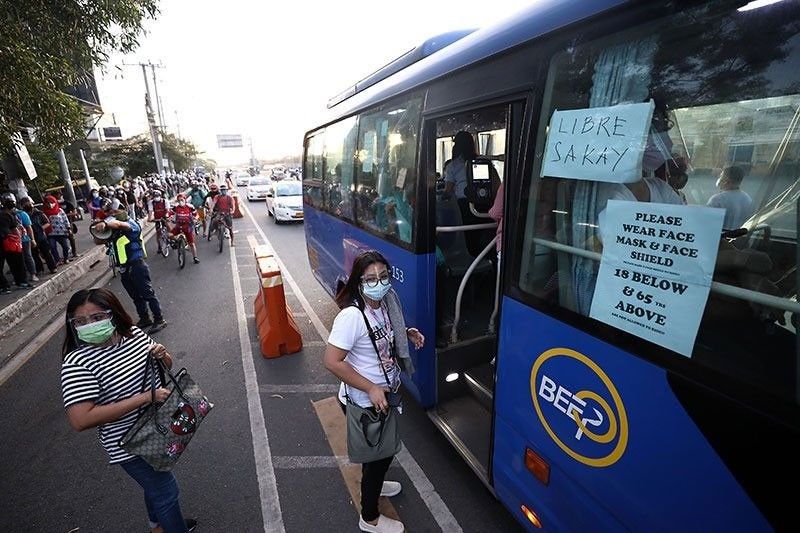Transit Advertising Philippines: An Innovative Means to Advertise
Transit Advertising Philippines: An Innovative Means to Advertise
Blog Article
Understanding the Function of Transit Marketing in Enhancing Brand Visibility and Consumer Interaction
Transit advertising has become a crucial component in the marketing landscape, using one-of-a-kind opportunities for brands to raise their presence and involve customers successfully. With the capacity to reach a restricted and varied audience during their everyday commutes, these marketing approaches are not just regarding exposure; they are about developing purposeful links with potential consumers. As we discover the multifaceted benefits and ingenious techniques within transportation advertising and marketing, it becomes important to think about just how these aspects collectively influence consumer assumption and habits, increasing concerns about their lasting effect on brand commitment.
Definition of Transportation Advertising
Transit marketing refers to the practice of advertising items, services, or brand names through ads placed around mass transit systems. This kind of advertising includes a range of positionings, including posters on buses and trains, electronic screens at transportation stations, and covers on the outside of lorries. It intends to reach a diverse target market, maximizing the high foot website traffic connected with public transit.
Transportation advertising and marketing is strategically placed to capture the interest of travelers, that often spend substantial time taking a trip or waiting. By integrating ads into the daily regimens of individuals, brand names can create an enduring impact and foster brand name acknowledgment. The medium is specifically effective in city atmospheres, where public transportation is a main setting of travel.
In addition, transportation advertising and marketing can assist in local targeting, allowing businesses to reach particular demographics based on transportation routes and terminal places. As urban populaces grow and the usage of public transportation rises, this advertising method has actually gotten prominence as a crucial part of incorporated marketing methods. The vibrant nature of transportation marketing, combined with its ability to involve customers in a restricted atmosphere, highlights its relevance in contemporary advertising and marketing practices.
Benefits of Transportation Marketing
The effectiveness of transit advertising and marketing hinges on its capability to provide a wide variety of benefits to brand names seeking to boost exposure and interaction. Among the key benefits is the extensive reach it offers; transit ads can successfully target diverse demographics across metropolitan areas, getting to both commuters and pedestrians alike. This broad exposure significantly enhances brand understanding.
An additional benefit is the high frequency of perceptions. As transportation cars follow well established routes and stop at multiple locations, they produce repetitive exposure that enhances brand messages. This frequency cultivates knowledge, which is vital in consumer decision-making.
Transportation advertising and marketing is likewise cost-efficient contrasted to other media systems. Given its large reach and potential for high impacts, brand names often experience a lower price per thousand impressions (CPM), optimizing their marketing spending plan.
Additionally, transportation advertisements can create a feeling of neighborhood connection. By straightening with neighborhood transportation systems, brands can reverberate with local audiences and foster a feeling of local satisfaction. This localized method enhances brand name commitment and engagement, making transit advertising and marketing an engaging option for companies intending to solidify their presence on the market.

Reliable Techniques for Transportation Campaigns
To optimize the impact of transit projects, brand names need to leverage critical preparation and execution customized to their target market. First, determining the demographic features of the audience making use of public transportation is important. This enables brands to develop customized messaging that resonates with prospective consumers.
Following, selecting the right transit tools is vital. Whether utilizing bus wraps, metro posters, or electronic displays, each medium has one-of-a-kind advantages that can boost presence. As an example, vivid visuals on bus wraps can stand out, while electronic advertisements can be updated often to mirror timely promotions.
In addition, incorporating a natural branding strategy throughout transit platforms ensures consistency and enhances the brand's identification. Utilizing attractive layouts and memorable taglines will certainly reinforce brand recall among commuters.
By using these methods, brands can successfully harness the possibility of transportation advertising and marketing, promoting better recognition and link with their target audience. Inevitably, a well-executed transportation campaign can drive considerable growth in brand visibility and consumer engagement.

Measuring Influence and Interaction
In assessing the performance of transit marketing campaign, accurate measurement of effect and involvement is crucial for brands looking for to enhance their advertising and marketing approaches. Metrics such as reach, frequency, and impacts offer fundamental information to assess presence. Evaluating these aspects assists identify how several prospective clients are subjected to the advertisements during their daily commutes.
Engagement can be additional assessed with consumer communications, such as site traffic, social media sites mentions, and straight responses to calls-to-action featured in the ads. Making use of tools like QR codes or unique URLs can promote tracking of consumer behavior straight linked to transportation projects. Surveys and feedback systems additionally function as valuable methods to collect qualitative information on customer understandings and recall of the advertisement.
Additionally, progressed analytics and acknowledgment versions can associate transportation direct exposure with succeeding investing in habits, providing insights into the return on investment. By utilizing an extensive strategy that combines quantitative and qualitative steps, brands can look what i found develop a nuanced understanding of their transit marketing impact. Inevitably, this data-driven method makes it possible for brands to refine their campaigns, guaranteeing they reverberate properly with target market and enhance general brand exposure.
Case Studies of Effective Projects
Effective transit advertising projects work as compelling instances of just how effective techniques can raise brand presence and engagement. Transit Advertising Philippines. One significant situation is the "I Love New york city" campaign, which changed the city's photo and brought in millions of vacationers. By using subway ads, signboards, and bus wraps, the campaign developed a solid, cohesive brand name identification, leading to a significant uptick in tourism and regional service patronage
An additional excellent project is Coca-Cola's "Share a Coke" initiative, which leveraged transit marketing to personalize the brand experience. By featuring preferred names on promotional materials across various transit platforms, Coca-Cola fostered a deeper emotional link with customers, encouraging them to share their experiences on social networks.
In addition, the "Got Milk?" project efficiently used public transport advertisements to get to a broad target market, enhancing the message of the significance of milk in a balanced diet. The project saw a their website measurable boost in milk consumption in target demographics.
These situation studies highlight that when implemented attentively, transportation advertising can substantially improve brand name presence, foster customer engagement, and drive quantifiable outcomes, demonstrating its crucial function in modern advertising methods. - Transit Advertising Philippines
Conclusion
In verdict, transportation advertising serves as a crucial device for enhancing brand visibility and promoting customer engagement. Eventually, the ability to determine engagement and assess successful instance researches highlights the performance of transportation advertising and marketing in driving brand name loyalty and consumer communications.
Transit advertising and marketing has actually emerged as a pivotal aspect in the advertising and marketing landscape, using special chances for brand names to raise their presence and engage consumers properly.Furthermore, transportation advertising can promote localized targeting, permitting businesses to reach specific demographics based on transportation routes and terminal places.In assessing the performance of transit marketing projects, accurate measurement of influence and engagement is essential for brand names seeking to enhance their advertising and marketing methods.Successful transportation marketing projects serve as engaging instances of exactly how efficient approaches can elevate brand click here for more info name exposure and engagement.In verdict, transit advertising and marketing serves as an important tool for improving brand presence and cultivating customer interaction.
Report this page